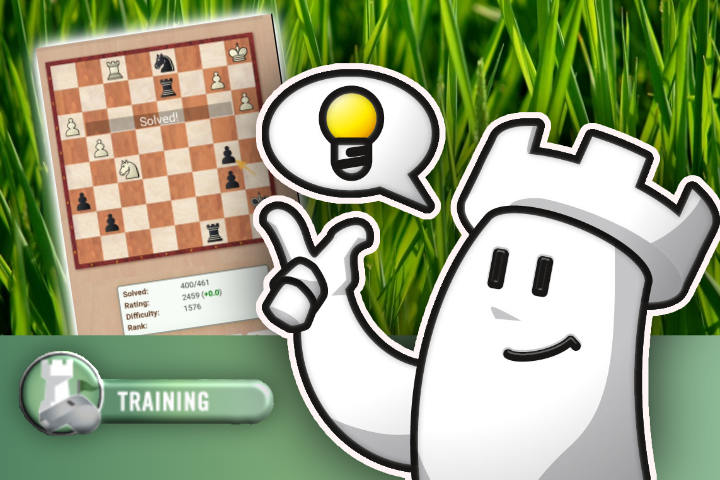


In the first article on the Tactics web app we looked in detail at the main tactics training mode: Solve Tactics. It is by far the most traditional of the modes, with near endless positions ranging from elementary to master level exercises with no time limits or constraints. However, the next two modes are quite literally the diametric opposite.
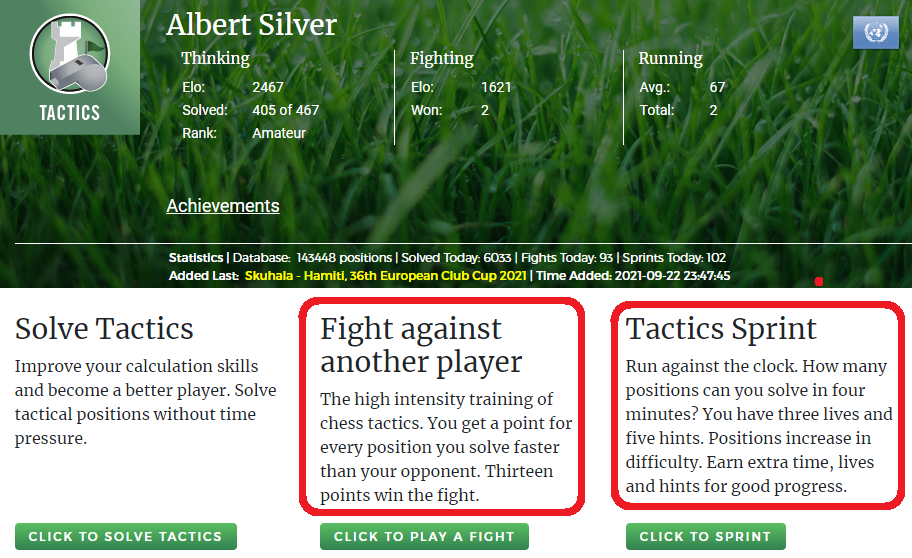
The purpose of this mode is to face another player and try to outsolve them over 24 positions. The first to score 12.5 points (yes, it is possible) wins the bout. Each player is given the exact same position to solve, and the first player to solve it scores a point. So how can you score a 'half-point'? If neither player posts a solution before 60 seconds, the position is considered a fail by both, and the players are given a half-point each.

As you can see here, the toolbar subtly offers buttons to start a bout or observe one. To start a bout, just click on Seek Fight and a match will immediately start with the free opponent closest to your ranking.
There are almost always a couple of players to choose against, some easy, some hard. It can be quite a nail-biter as you try to solve a puzzle, and suddenly see the message that the other player beat you to the punch, meaning you must try again in the next position, since this one is over.
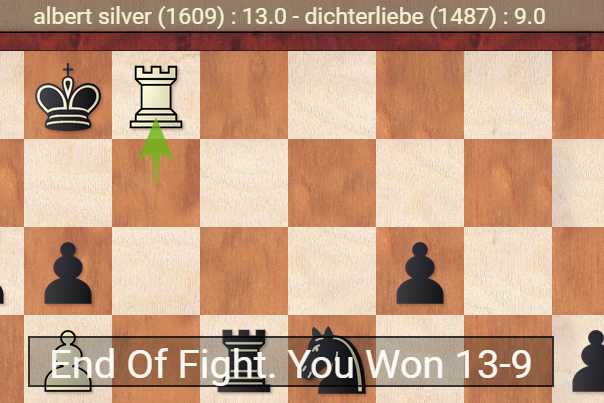
The tactics are all usually very direct, and require an alert mind honed for quick but deadly tactics. Training such positions is not always obvious since the core tactics trainer is meant for a more normal range. So what to do? That is where Tactics Sprint comes into play.
This is a single player exercise, but definitely one that can really grab a hold of you. The idea is fairly simple: You have four minutes and must solve as many positions as possible in that time. The more you solve the harder they get. Sounds simple enough, right? But there is more. This is not a four-minute knockout, no, this has time added for each solution. In fact in theory you could be at the board for much much more than four minutes, but the time you get is not really enough to keep you above water for too long, unless your name is Hikaru Nakamura. Then you may be at it for quite a bit longer.
This format can be a real adrenaline rush, not just because of the dwindling time, but because of the desire to be quick to get those precious increment seconds added to your clock. Overall these can be really fun as you try to blitz through as many as possible, and of course each time try to break your own high score.
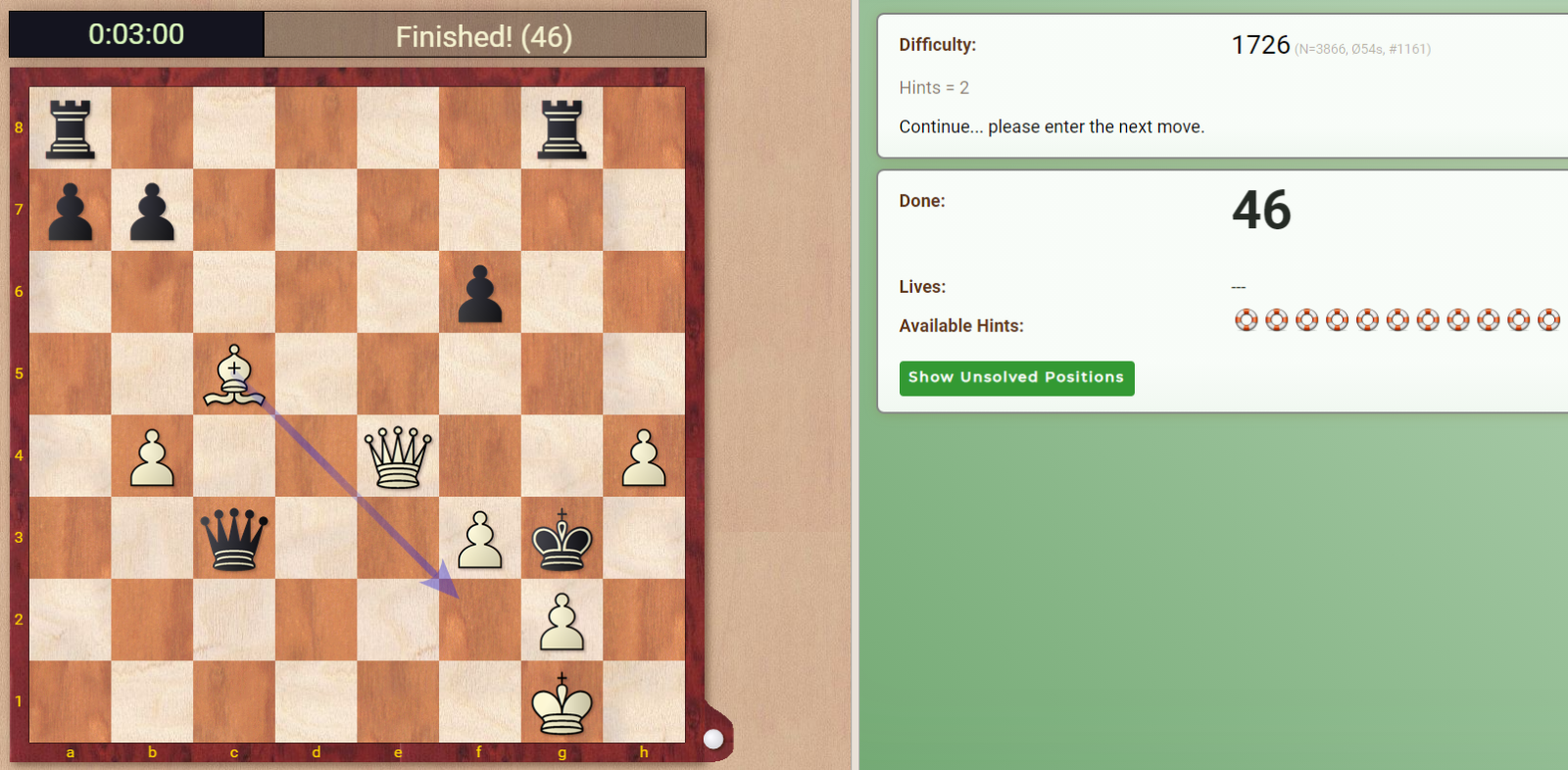
However, it is not only about extending your time. There is a real price to pay if your solution is wrong. At the onset you get five 'lives', so if you fail five times then like any self-respecting video game, your lives are up and it is game over. As a result, unless you are literally down to the dregs of time, with nothing to lose, spend a few extra seconds to be sure of your reply before playing it.
Finally, there is a trick you may wish to be careful for. When you are racing against the clock (or an opponent), some positions can easily get you looking for a move for the wrong color. So be sure to check the bottom right corner of the board if you are not immediately sure.
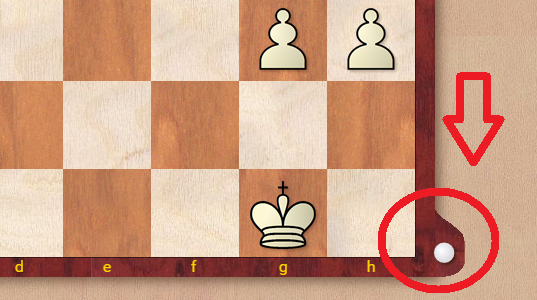
If you missed part one of this overview, feel free to see the video below to see the app in action, including how it plays on a smartphone.
Happy chess, and good mates.